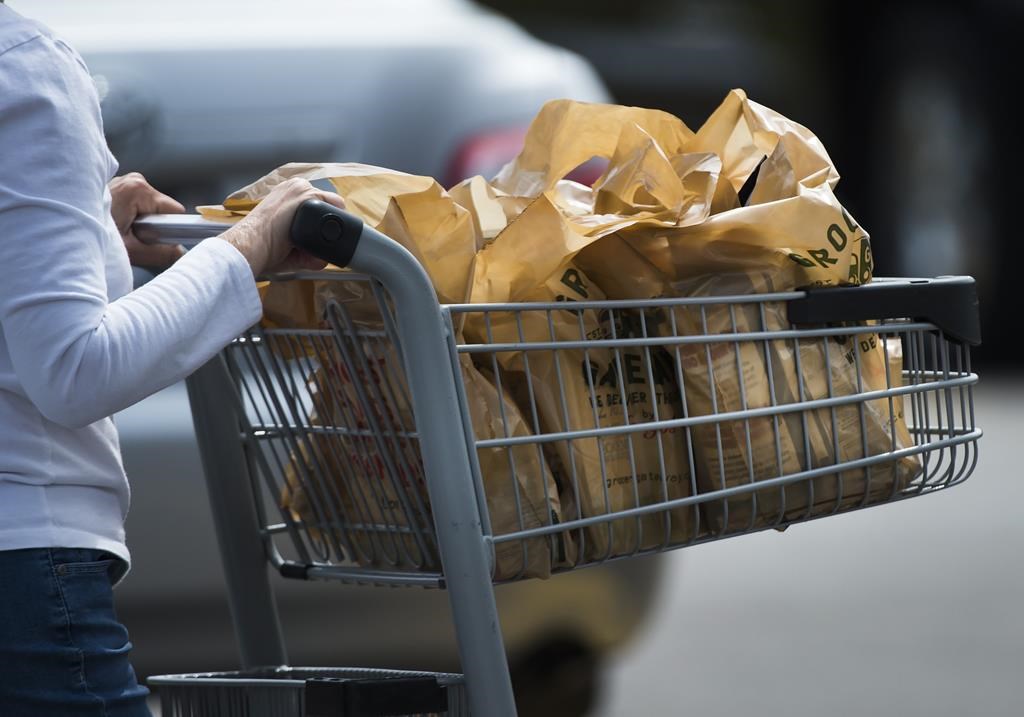A new report from the Middlesex-London Health Unit is painting a stark picture when it comes to the issue of food affordability and insecurity among lower-income residents and those on social assistance in the London, Ont. area.

According to the report, going before Thursday’s meeting of the local Board of Health, a family of four on Ontario Works, looking to purchase nutritious food, would need to spend an estimated 40 per cent of their monthly after-tax income ($2,760) compared to 12 per cent for a family of four with a median income ($9,343).
Single-person households on Ontario Works wind up an estimated $389 in debt at the end of the month, with all of their income ($863) going toward rent, the report says. Food would cost another nearly $400, or about 45 per cent of their income.
“In the time that we’ve been doing these household scenarios and looking at affordability, the single person on Ontario Works is always worse off. The amount that the person is worse off… it’s more than we’ve ever seen in the past,” said Kim Loupos, public health dietitian with MLHU.
For a single person receiving Ontario Disability Support Program (ODSP) payments, they would need to spend roughly 30 per cent of their income on food and 86 per cent on rent, leaving them $207 in the red.
Food prices used in the report come from a survey conducted by the MLHU in May 2022 of prices at 12 local grocery stores, both online and in-store. The survey found that it would cost an estimated $1,084 per month to feed a local family of four the contents of a nutritious food basket as defined by Health Canada.
The “National Nutritious Food Basket” is a survey tool used to monitor the cost of healthy eating in Canada, comprised of 61 different foods consistent with Canada’s updated food guide, including various vegetables and fruits, proteins, whole grains and unsaturated fats.
“We know that food insecurity, inadequate access to food due to financial constraints has a huge impact on physical health, mental health, social health,” Loupos said.
“Food is one of those things that people cut first in terms of their expenses… so people do things like reducing the amount of food that they eat, to skipping meals, changing the types of foods that they purchase, less expensive food.”

Those who are food insecure are at greater risk of chronic and infectious disease, depression, and stress, she says, noting that as food insecurity increases, so too does health care costs for those in severely food insecure households.
“Those are folks who are skipping meals because of lack of access to food. Their health care costs are 121 per cent higher compared to folks who are food secure,” she said.
The report’s findings are also based on 2022 income statistics from Ontario Dietitians in Public Health — including all tax credits and benefits those outlined in the report would be eligible for — and rent statistics from a January 2023 Canadian Mortgage and Housing Corp. rental market survey.
“These housing costs… includes many renters who have been renting for a number of years, so the landlords would not be able to increase the rent on a yearly basis as much as someone who is new to renting that place,” Loupos said.
“So the rental costs we’ve used… may be much less than what people might actually see if they’re trying to rent a new place.”
The estimates don’t factor in additional expenses for things like cellphones, clothing, education, internet, household supplies, medical and dental costs, transportation.
They also don’t take into account increases in inflation over the past year which have shot up grocery costs. Grocery prices were up 9.7 per cent on a year-over-year basis in March, down from 10.6 per cent in February. Statistics Canada said the deceleration was driven by lower prices for fruits and vegetables.
The federal government’s recently tabled budget includes a one-time grocery rebate for “low- and modest-income Canadians” that it says is meant to provide relief.
“These numbers are from May of last year, so it’s already they’re likely worse off now,” Loupos said.
“The rising cost of food and housing… social assistance rates have not kept pace with those rising costs, not in any means. Even a minimum wage is not keeping pace with that.”
Ontario’s minimum wage rose to $15.50 in October, and is set to rise to $16.55 this October.
A living wage in the London area stood at $18.05 as of November, according to the Ontario Living Wage Network, which defines a living wage as “the hourly earnings someone needs to earn to have an income that covers their cost of living” in their community.
Board of Health members will vote Thursday to receive the report for information, and whether to forward it to Ontario boards of health, the city, Middlesex County, and “appropriate community agencies.”
They’ll also hear about income-based solutions outlined in the report, including increasing social assistance rates for Ontario Works and ODSP, and the province’s minimum wage, Loupos said.
More than 520,000 people received ODSP support in 2020-21, according to the province’s auditor general, while roughly 241,000 unemployed or underemployed Ontarians and more than 200,000 of their family members received financial aid from Ontario Works in 2019-20.
Social assistance rates have been largely stagnant for years, with a single person able to receive up to $1,228 a month on ODSP and $733 on Ontario Works.
The province increased ODSP payments by five per cent in September, increasing the maximum payment by $58 a month to $1,228. Despite the increase, a single person on ODSP would still be $150 in the red every month after rent and food according to MLHU calculations, Loupos said.
Annual ODSP increases will be based on inflation starting this June.
Since February, the province has also begun allowing ODSP recipients to earn more money from working before clawing back their benefits.
— with files from The Canadian Press









Comments